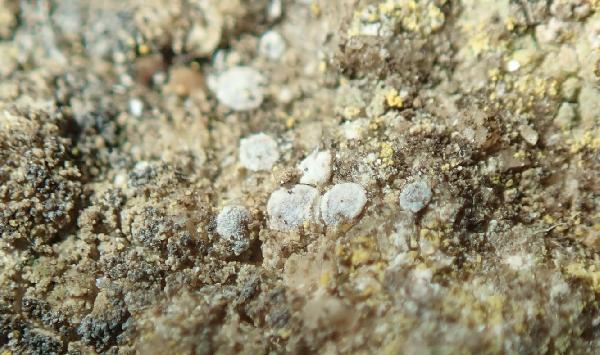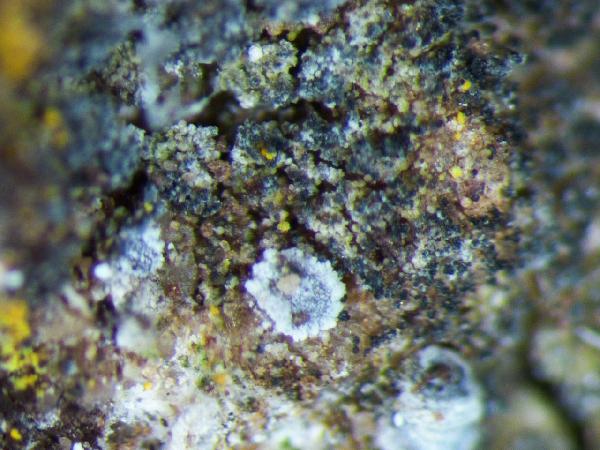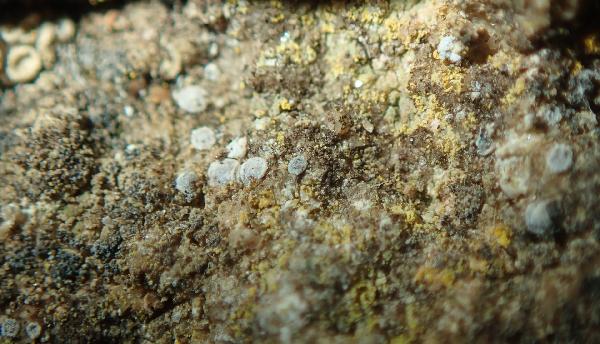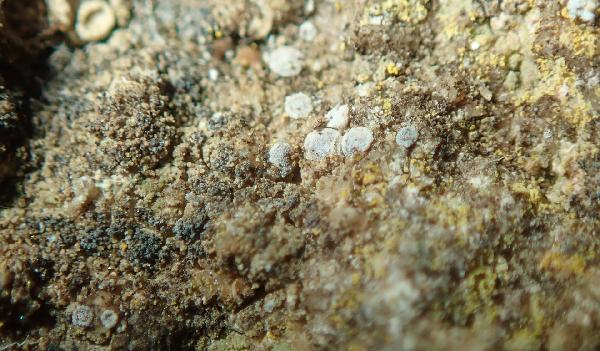Lecania leprosa Reese Næsb. & Vondrák
in Reese Næsborg, Mycologia, 100, 3: 410, 2008
Synonyms:
Distribution:
Description: Thallus crustose, episubstratic, thick to rather thin, pale to dark blue-grey or lead-grey irregularly cracked-areolate, epruinose, appearing subleprose, densely blastidiate. Apothecia rare, lecanorine, rounded, adpressed to thallus, (0.17-)0.3-0.5(-0.6) mm across, sometimes white-pruinose, with a flat to slightly convex, red-brown to dark brown disc and a thin, granular-blastidiate, often finally excluded thalline margin. Thalline exciple with a pale brown to red-brown medullary part; epithecium pale brown to red-brown, K- or K+ weakly reddish; hymenium colourless to pale brown, (43-)47-58(-62) µm high; paraphyses coherent, mostly not swollen at apex, but a few apical cells slightly clavate, up to 3-3.5(-4) µm wide; hypothecium colourless. Asci 8-spored, narrowly clavate, with a K/I+ blue tholus and a central non-amyloid area, Bacidia-type. Ascospores 1-septate, hyaline, ellipsoid, straight, (9-)10-11.5(-13.5) x 3-4(-4.5) µm, without a gelatinous perispore. Photobiont chlorococcoid. Spot tests: thallus K-, C-, KC-, P-, UV-. Chemistry: the thallus contains the acetone insoluble Hertelii-green pigment.Note: a recently-described species known from several localities in Central Europe, from Austria to Romania, growing on mortar, concrete and limestone. To be looked for in Italy.
Growth form: Crustose
Substrata: rocks
Photobiont: green algae other than Trentepohlia
Reproductive strategy: mainly asexual, by soredia, or soredia-like structures (e.g. blastidia)

Predictive model
Growth form: Crustose
Substrata: rocks
Photobiont: green algae other than Trentepohlia
Reproductive strategy: mainly asexual, by soredia, or soredia-like structures (e.g. blastidia)

Predictive model
 INDEX FUNGORUM
INDEX FUNGORUM
 GBIF
GBIF





